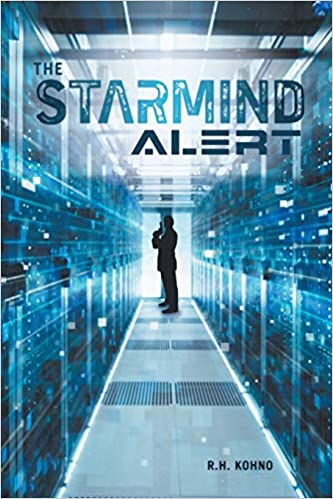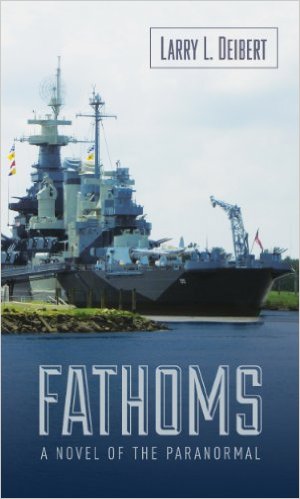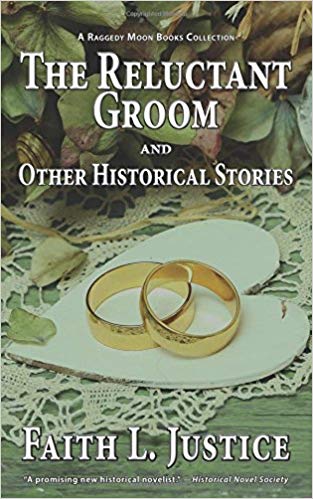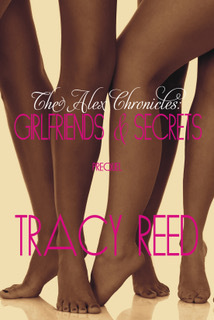From Empty to Energized
May 20, 2018 by Meriam Wilhelm in category A Bit of Magic by Meriam Wilhelm tagged as creativity, the writing processI knew that I needed to work on the next chapter of my book if there was any chance it would be completed by this July. But did I? Did I hit the keyboard, do a little more research on witchcraft in the 1600’s or even pick up my editing pencil to work on what I’d already written?
No.
Instead, I sewed. I made my granddaughter bibs and blankets and stuffed bunnies. I made pot holders and hot mitts. I love to sew almost as much as I love to write and my two passions often collide with each other. Truthfully, I know I often turn to sewing when I’m stuck for an idea and I was good and stuck! I had a million directions that I wanted to take my story, but no clear path. It always seems that when I’m three quarters of the way through writing a new book, I lose speed, my focus waivers and I become fearful that my creativity is ebbing. A scary feeling indeed for any new writer like myself.
So what did I do?
I transferred all of my energy into my third passion – reading. But not just any reading. I was seeking something to jolt my spirits, inspire my creativity and get me motivated. So I want to share with you where I found it – in case you’re ever searching for something to inspire your own creativity.
Visiting Barnes and Noble with my sister, on a quest for a book about how to build a bird house, that’s creative right? – I stumbled upon WHERE WOMEN CREATE. It’s a great magazine, albeit a bit pricey, that shares the stories of truly creative modern day women. And what a great treat it turned out to be!
I savored the magazine like a fine wine. Okay, I savored it over a couple glasses of fine wine before deciding that I wouldn’t just speed read through the pages. I wanted to immerse myself in each woman’s story, take in her words of inspiration and enjoy the great photography that accompanied each story. I read an account or two each day over the next week. Of course, I soon realized that I had to replace the wine with cups of hot hazelnut coffee – my favorite – if I was going to get the full value out of this periodical.
The magazine focuses on women who express their creativity daily in a myriad of ways. It talks about what they do, where they do it and how many have been able to make a successful career using their innovative skills. They share their tricks of the trade, their frustrations and inspirations. Some seem to have realized success early on while others have worked for years to bring their dreams to fruition.
Anyway, I truly enjoyed the inspiration I found within the pages of WHERE WOMEN CREATE . These are artsy women who have created magic, many of them from their own kitchen table. The magazine is a relaxing trip through the lives of inventive, resourceful women. I can’t tell you for sure whether it was the wine, the words or the wonderful stories that inspired me to return to my writing. Whatever it was, it worked and I am back with a renewed spirit.
Oh, and guess what I else I found in the magazine? A sister series; a magazine (apron*ology). Now I can be inspired with both my writing and my sewing. Who knew?
Have a wonderful, inspired and magical day!
1 0 Read moreThe Mighty Pen vs The Purposeful Keyboard by Jenny Jensen
April 19, 2018 by Jenny Jensen in category On writing . . . by Jenny Jensen tagged as creativity, handwriting, writing

When was the last time you wrote anything in longhand? Jotting a note, shopping and to-do lists don’t count.
Since writing, no matter what tool we use, is the expression of ideas does the tool you use affect those ideas? If you write out your novel in longhand would the creative process be the same as if you’d clicked it out on a keyboard? Would it be the same story?
Reams have been written (by hand or keyboard?) about the cognitive difference between the two methods. I’ve read articles by neuroscientists who point out the different mental skills each requires; a keyboard is automatic once you’ve learned where each key is and that makes it fast enough to capture a word the second it pops to mind, while handwriting is linked to the creative part of the brain, problem solving and critical thinking. And it takes a bit more time, time for your brain to make more sense of those rapid-fire thoughts. But there’s no denying the ease of the keyboard.
Cursive isn’t taught in schools much anymore so it’s pretty clear we favor the keyboard over pen and paper. Cursive handwriting, where the pen is not raised between characters, has been replaced with learning to use a qwerty keyboard. Are there advanced classes covering the various methods of texting — thumbs versus one-fingered hunt and peck? I could do with that.
A friend of mine died recently. It wasn’t quick or unexpected. I sat down to my keyboard and in 15 minutes clicked out a letter to her husband. There was a lot I wanted to say in as few words as possible and I hoped the words would bring him some comfort. It wasn’t right at all. By the third draft I realized the words might as well have come from Miss Mourning’s Official Book of Sympathy Letters. My words felt clinical. That’s when I took up pen and paper.
I don’t know if it was the weight of the pen in my hand, the feel of the paper or the sight of the words mirroring my thoughts as they appeared beneath my hand. Maybe it was the time the act of writing allowed me to consider before the thoughts appeared as words, but the first handwritten attempt was exactly right. The words were genuine and personal and I knew they would touch my friend’s husband in a good way.
There have been thousands of wonderful writers since the advent of the typewriter — the first keyboard. It’s obvious that the method hasn’t harmed creativity. I do wonder if the works of Louisa May Alcott or Dickens would have been different if they’d had Microsoft Word. (I suspect they’d have loved it for the revisions alone.) Of course there are those contemporary authors like Joyce Carol Oates, who only write in longhand. George R.R. Martin is another. He must have developed Olympian hand muscles by now. The pen trumps the keyboard for some mighty talented writers.
I’m sharing these wandering thoughts because I did learn a lesson with that letter. If you find yourself stuck over a scene, uncertain where to take a plot or floundering over some critical dialog, take up pencil and paper and write it out by hand. There’s a more direct, more personal connection to heart and mind that may well help the right words flow – provided you’ve been taught cursive.
2 0 Read moreA Fleshy Toggle Switch? by Diane Sismour
January 17, 2018 by marianne h donley in category Apples & Oranges by Marianne H. Donley, Guest Posts tagged as characters, creativity, Diane Sismour, Guest posts
Sometimes I wish for a fleshy toggle switch just to concentrate. A switch to turn on the, “What ifs,” or off to allow me to listen to a conversation without having a character make a sidebar comment, with a dimmer to shut out the annoying static from everyday life. On the other hand, where would a writer be without those voices banging around, attempting to push a story out of them?
Most writers I know have characters talking to them. Not just giving an occasional shout, but full arguments that can shove a manuscript into unplotted waters. What would happen if they went silent? I shudder the thought.
My characters made themselves present in those geeky years attending a new high school, trying to fit into any group, but not. Of course, telling anyone about them could have brought dire consequences. Someone would have had me committed to a padded cell on the sunny side of a psych ward, so the thoughts went into a journal. The voices got louder, I listened, my writing voice strengthened, and those ideas became plots.
From where did these constant distractions come, and why me? Isn’t there enough going on in my life for one of me knocking around in my mind? Oh my gosh…my characters just gasped collectively.
I smile before giving a mental nudge. “Hey, just kidding guys.”
Although I still wish for a fleshy toggle switch, I cannot imagine a life without writing or my constant companions pushing my boundaries by asking, “What if.”
Have a creative New Year, and as always, Happy Writing,
Diane

Diane Sismour has written poetry and fiction for over 35 years in multiple genres. She lives with her husband in eastern Pennsylvania at the foothills of the Blue Mountains. Diane is a member of Romance Writers of America, Bethlehem Writer’s Group LLC, Horror Writers Association, and Liberty States Fiction Writers. She enjoys interviewing other authors and leading writer’s workshops.
Her website is www.dianesismour.com, and her blog is www.dianesismour.blogspot.com.
You can find her on Facebook and Twitter at: http://facebook.com/dianesismour, http://facebook.com/networkforthearts, and https://twitter.com/dianesismour.
DEVILISHLY GOOD DETAILS
January 15, 2018 by Rebecca Forster in category The Write Life by Rebecca Forster tagged as Craft, creativity, inspiration, movies, process, Storytelling Yesterday my husband and I decided to inaugurate the MoviePass cards our son gave us for Christmas. With one swipe (and $10 a month) we can see as many movies as we like at any theater.
Yesterday my husband and I decided to inaugurate the MoviePass cards our son gave us for Christmas. With one swipe (and $10 a month) we can see as many movies as we like at any theater.
Our first movie would be The Post at our local theater. It took both of us, and the manager, to figure out how to make the card work (which in hindsight should not have been necessary if we understood our phone settings). Finally, we swiped our cards only to find that The Post was sold out. That pushed us to our default selection: any movie that was not sold out. We ended up in a nearly empty theater watching Jumanji, the 20-year-later sequel to Robin William’s wonderful movie by the same name.
Jumanji is a fanciful action-adventure movie about a game that sucks people into an alternate universe and in order to get home, the player must win the game. In William’s version, he was the only one who disappeared. This version has an ensemble cast that includes The Rock, Jack Black and two other actors we weren’t familiar with but who were perfectly cast.
The movie began, the music was ominous, the set up delightful, the locations beautiful and the direction energetic. The kids in the theater reacted with oohs, aahs, and other exclamations of delight.
Oh, wait! That was me oohing and aahing!
Yep, I loved every bit of that movie and when I got home I realized the reason I loved it was because I lost myself in the storytelling. Everyone from the screenwriter to the lighting guy and cast was on board with the creative vision. The premise was quickly and clearly established. Casting was based on character and not on what looks that the producers deemed ‘sexy and salable’. The computer-generated stunts did not overpower the story nor did they last so long that the viewer could literally leave, have dinner and come back and they would still be crashing about on screen. If something fantastic happened – like characters dying and getting shot into space and suddenly falling back to earth again without injury – the viewer accepted it because it quickly became apparent that each piece of this story had a purpose. There was always a payoff that made sense. Threads were wrapped up at the end. The story built to a conclusion and didn’t present it. But better than anything, the actors never broke character. The adult actors were asked to channel their teenage counterparts in the real world that had been left behind. I have seen this transference in movies before but too often the adult actor simply remains an adult. The last time I saw this plot point beautifully executed was in Tom Hanks’s Big.
So, here’s what I want you to do. Before you write another word, before you start editing, go see Jumanji. It is one of the best lessons in pitch-perfect storytelling I’ve had in a very long time. As for me, I’m going back to work and give my manuscript the Jumanji treatment because the devilish details are what make for a heavenly story.
Subscribe and get my 2-book starter library FREE:
Follow me on Bookbub!
Follow me on Facebook
Follow me on Twitter
4 0 Read moreART & SOUL
January 15, 2014 by A Slice of Orange in category Archives tagged as art, business, creativity, publishers
Affiliate Links
A Slice of Orange is an affiliate with some of the booksellers listed on this website, including Barnes & Nobel, Books A Million, iBooks, Kobo, and Smashwords. This means A Slice of Orange may earn a small advertising fee from sales made through the links used on this website. There are reminders of these affiliate links on the pages for individual books.
Search A Slice of Orange
Find a Column
Archives
Featured Books
SHOULD HAVE PLAYED POKER
Truth and integrity aren’t always what we’ve been taught to believe, and one could die making that discovery.
More info →
THE STARMIND ALERT
A psychic thriller that tries to catch an arch terrorist who is like a greased cat.
More info →THE RELUCTANT GROOM AND OTHER HISTORICAL STORIES
Enjoy historical fiction? Like short stories? Then dive into this collection of historical shorts by an award-winning author.
More info →GIRLFRIENDS & SECRETS
Alexandra “Alex” Miller and her best friends are more like sisters. They live by the code that a good girlfriend will stick by you and be honest with you not matter what.
More info →Newsletter
Contributing Authors
Search A Slice of Orange
Find a Column
Archives
Authors in the Bookstore
- A. E. Decker
- A. J. Scudiere
- A.J. Sidransky
- A.M. Roark
- Abby Collette
- Alanna Lucus
- Albert Marrin
- Alice Duncan
- Alina K. Field
- Alison Green Myers
- Andi Lawrencovna
- Andrew C Raiford
- Angela Pryce
- Aviva Vaughn
- Barbara Ankrum
- Bethlehem Writers Group, LLC
- Carol L. Wright
- Celeste Barclay
- Christina Alexandra
- Christopher D. Ochs
- Claire Davon
- Claire Naden
- Courtnee Turner Hoyle
- Courtney Annicchiarico
- D. Lieber
- Daniel V. Meier Jr.
- Debra Dixon
- Debra H. Goldstein
- Debra Holland
- Dee Ann Palmer
- Denise M. Colby
- Diane Benefiel
- Diane Sismour
- Dianna Sinovic
- DT Krippene
- E.B. Dawson
- Emilie Dallaire
- Emily Brightwell
- Emily PW Murphy
- Fae Rowen
- Faith L. Justice
- Frances Amati
- Geralyn Corcillo
- Glynnis Campbell
- Greg Jolley
- H. O. Charles
- Jaclyn Roché
- Jacqueline Diamond
- Janet Lynn and Will Zeilinger
- Jaya Mehta
- Jeannine Atkins
- Jeff Baird
- Jenna Barwin
- Jenne Kern
- Jennifer D. Bokal
- Jennifer Lyon
- Jerome W. McFadden
- Jill Piscitello
- Jina Bacarr
- Jo A. Hiestand
- Jodi Bogert
- Jolina Petersheim
- Jonathan Maberry
- Joy Allyson
- Judy Duarte
- Justin Murphy
- Justine Davis
- Kat Martin
- Kidd Wadsworth
- Kitty Bucholtz
- Kristy Tate
- Larry Deibert
- Larry Hamilton
- Laura Drake
- Laurie Stevens
- Leslie Knowles
- Li-Ying Lundquist
- Linda Carroll-Bradd
- Linda Lappin
- Linda McLaughlin
- Linda O. Johnston
- Lisa Preston
- Lolo Paige
- Loran Holt
- Lynette M. Burrows
- Lyssa Kay Adams
- Madeline Ash
- Margarita Engle
- Marguerite Quantaine
- Marianne H. Donley
- Mary Castillo
- Maureen Klovers
- Megan Haskell
- Melanie Waterbury
- Melisa Rivero
- Melissa Chambers
- Melodie Winawer
- Meriam Wilhelm
- Mikel J. Wilson
- Mindy Neff
- Monica McCabe
- Nancy Brashear
- Neetu Malik
- Nikki Prince
- Once Upon Anthologies
- Paula Gail Benson
- Penny Reid
- Peter J Barbour
- Priscilla Oliveras
- R. H. Kohno
- Rachel Hailey
- Ralph Hieb
- Ramcy Diek
- Ransom Stephens
- Rebecca Forster
- Renae Wrich
- Roxy Matthews
- Ryder Hunte Clancy
- Sally Paradysz
- Sheila Colón-Bagley
- Simone de Muñoz
- Sophie Barnes
- Susan Kaye Quinn
- Susan Lynn Meyer
- Susan Squires
- T. D. Fox
- Tara C. Allred
- Tara Lain
- Tari Lynn Jewett
- Terri Osburn
- Tracy Reed
- Vera Jane Cook
- Vicki Crum
- Writing Something Romantic
Affiliate Links
A Slice of Orange is an affiliate with some of the booksellers listed on this website, including Barnes & Nobel, Books A Million, iBooks, Kobo, and Smashwords. This means A Slice of Orange may earn a small advertising fee from sales made through the links used on this website. There are reminders of these affiliate links on the pages for individual books.





















































